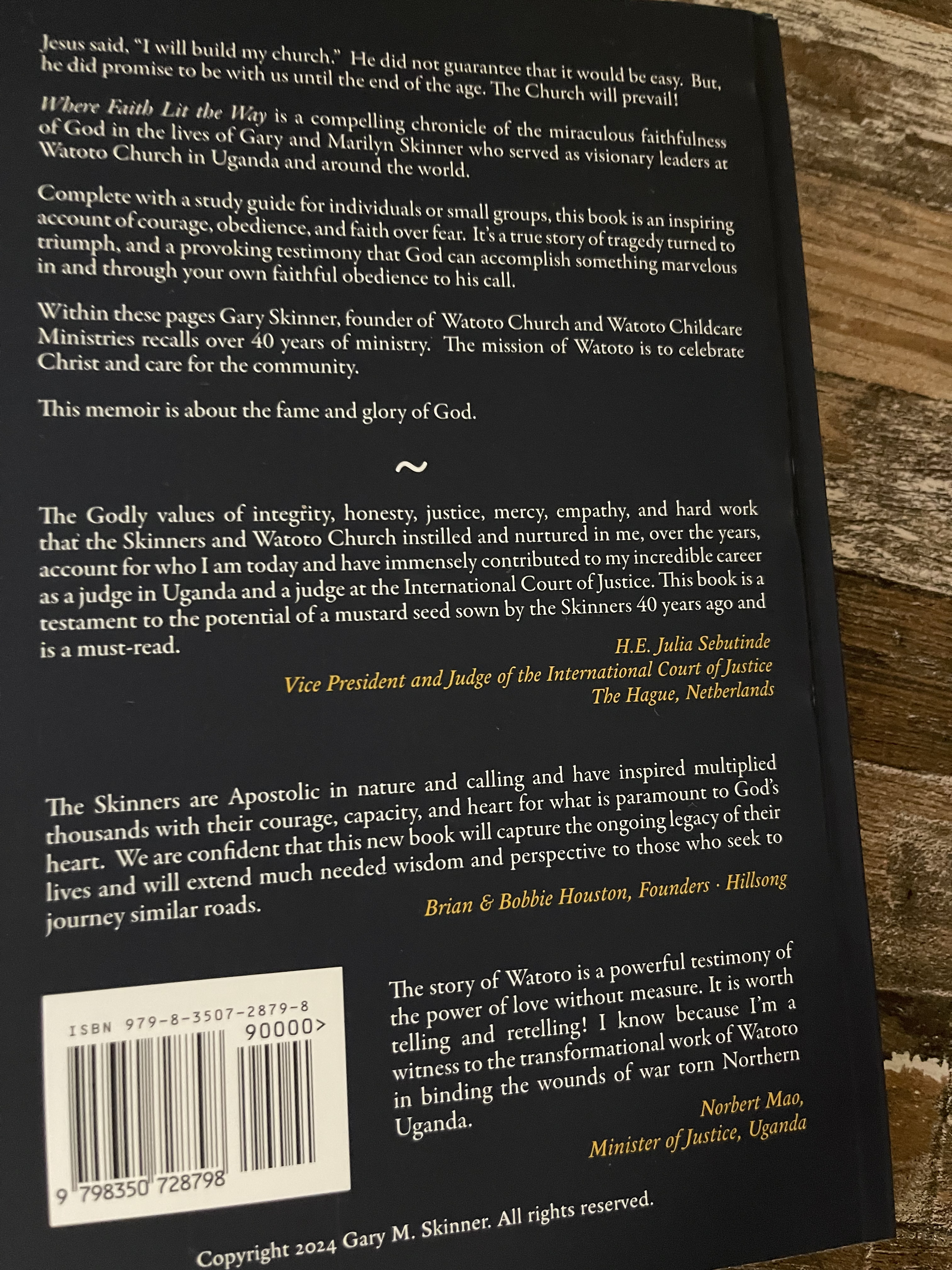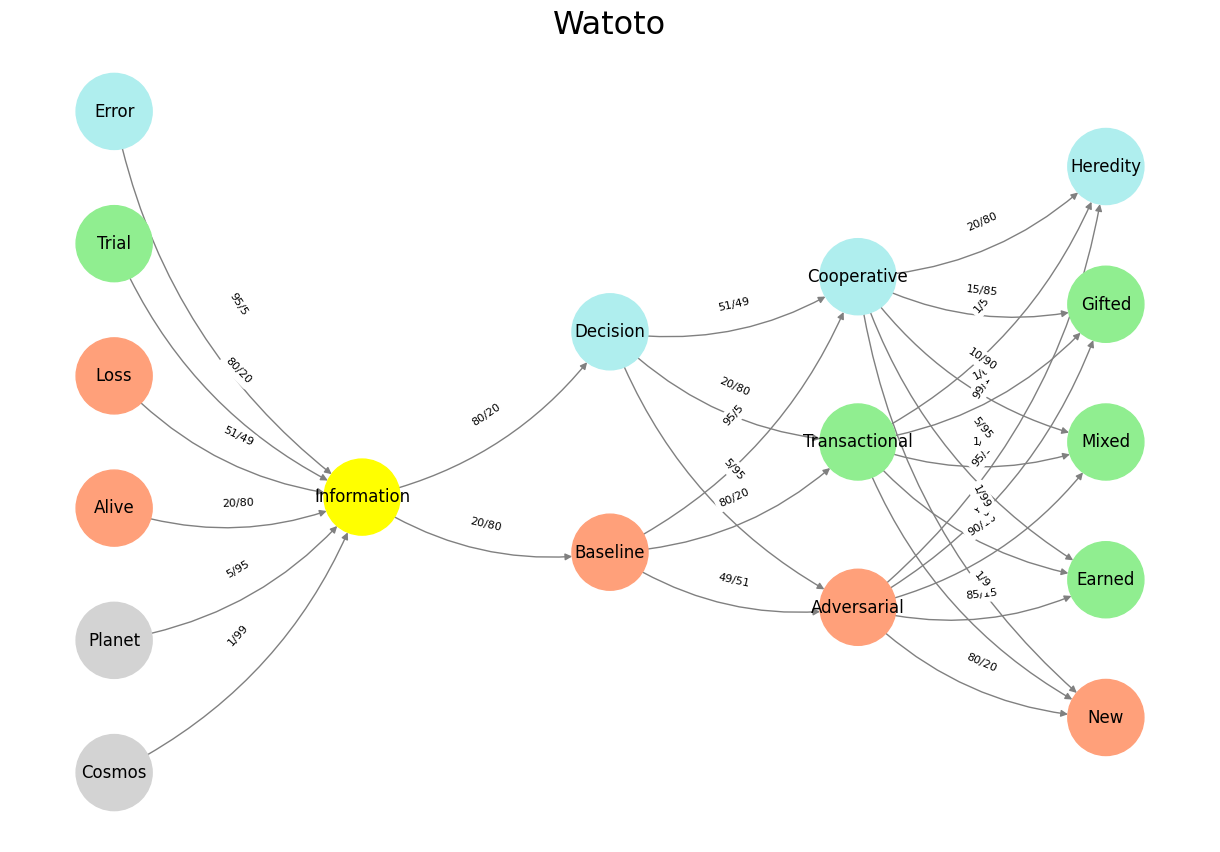Revolution#
Faith, in the purest sense, operates at the threshold between speculation and certainty, a force that pulls the individual from the margins of the improbable into the realm of the inevitable. Where Faith Lit the Way is, at its core, a chronicle of this journey—a testament to how long-shot convictions transform into lived realities, shaping communities and rewriting destinies. The story of Gary and Marilyn Skinner, as framed within this memoir, unfolds along the full gradient of belief, from the raw gamble of faith in the unknown to the establishment of a thriving institution that today stands as an unquestioned pillar of certainty. The arc of their experience is one of increasing informational density, a shift from a speculative wager into an outcome that, looking back, seems almost preordained.
Fig. 23 What Exactly is Identity. A node may represent goats (in general) and another sheep (in general). But the identity of any specific animal (not its species) is a network. For this reason we might have a “black sheep”, distinct in certain ways – perhaps more like a goat than other sheep. But that’s all dull stuff. Mistaken identity is often the fuel of comedy, usually when the adversarial is mistaken for the cooperative or even the transactional.#
At the outset, the vision of Watoto Church would have appeared as a long-shot—a speculative pursuit grounded in conviction rather than evidence. When the Skinners embarked on their mission, they were not acting from a position of structural security or guaranteed success. Instead, they were stepping into a space where information was scarce, where the odds were stacked against them, and where only faith provided the necessary momentum to move forward. Long-shot faith is different from blind optimism; it is not a refusal to acknowledge reality, but rather a conscious defiance of the prevailing narrative. At this stage, the information available would have pointed toward impossibility. Who, in their right mind, would bet on two outsiders establishing a movement with far-reaching spiritual and humanitarian consequences in Uganda? Yet faith, by its very nature, demands such irrational commitments.
Over time, however, their position shifted from outsiders to something closer to an emerging force—still not the consensus, still not the dominant narrative, but no longer an impossibility either. The work had begun to take shape, the seeds of the mission had taken root, and early successes provided just enough confirmation to sustain forward motion. This is where the informational field begins to stabilize, where skepticism starts to erode, and where what once seemed improbable now exists in a liminal space between uncertainty and proof. At this stage, obedience becomes as important as courage—once the wager has been placed, the discipline to follow through is what carries the vision forward. Outsiders at this stage are those who have refused to fold under the weight of doubt but who also have not yet gained the recognition of inevitability.

Fig. 24 What Exactly is Identity. A node may represent goats (in general) and another sheep (in general). But the identity of any specific animal (not its species) is a network. For this reason we might have a “black sheep”, distinct in certain ways – perhaps more like a goat than other sheep. But that’s all dull stuff. Mistaken identity is often the fuel of comedy, usually when the adversarial is mistaken for the cooperative or even the transactional.#
With persistence, the mission reaches a critical threshold—even-odds, the inflection point where faith and doubt balance each other perfectly. This is the stage where success is no longer speculative, but neither is it guaranteed. At even-odds, the system itself is in perfect tension, and the outcome hinges on the final push. This is the moment in a story where doubt can be at its most corrosive, where the weight of accumulated knowledge makes the final hurdle seem both impossibly close and infinitely distant. The accounts of struggle and perseverance in Where Faith Lit the Way likely exist in this space—those moments where the work had advanced enough to be real but had not yet reached the point of self-sustaining certainty. Here, faith is no longer an abstract gamble but a practical force, a necessity rather than a virtue.
Eventually, the work reaches a point of stability, where it becomes the favorite—a position of increasing certainty, where the weight of information leans heavily toward the expectation of success. Watoto Church is no longer a fragile idea but an institution, its impact reinforced by decades of ministry, its momentum difficult to contest. This is the phase where faith begins to look, in hindsight, like destiny rather than risk. To an outsider viewing the organization today, it might seem obvious that it would succeed, that it was always going to grow, that its place in the world was never in question. But that certainty is an illusion born of accumulated information. What was once a reckless leap is now an expectation, what was once speculative has become inevitable.

Fig. 25 What Exactly is Identity. A node may represent goats (in general) and another sheep (in general). But the identity of any specific animal (not its species) is a network. For this reason we might have a “black sheep”, distinct in certain ways – perhaps more like a goat than other sheep. But that’s all dull stuff. Mistaken identity is often the fuel of comedy, usually when the adversarial is mistaken for the cooperative or even the transactional.#
At the far end of the spectrum lies certainty—the shortest odds, the place where faith is no longer a gamble but an established truth. This is where doubt no longer functions as a meaningful force, where obedience is no longer a struggle but a natural extension of reality. In the context of Where Faith Lit the Way, this certainty is not just about the survival of Watoto Church but about the broader theological and existential implications of faith itself. The memoir positions belief as something that moves through all phases of uncertainty, but in the end, it claims the certainty of divine purpose. The work that began as a long-shot act of courage has transformed into a self-evident legacy, a movement whose existence now justifies the faith that created it.
Tip
Courage/Longshot, 95/5
Obedience/Outsider, 80/20
Faith/Even Odds, 51/49
Hope/Favorite, 20/80
Love/Certainty, 5/95
Yet the irony of certainty is that it erases its own history of doubt. The world is built by those who take long-shot bets, yet once their visions materialize, the speculative nature of their faith is forgotten. The final certainty of faith, in any domain, is often mistaken for inevitability. But as Where Faith Lit the Way demonstrates, no certainty exists without first passing through the full spectrum of risk, perseverance, and belief.
Show code cell source
import numpy as np
import matplotlib.pyplot as plt
import networkx as nx
# Define the neural network layers
def define_layers():
return {
'Suis': ['Cosmos', 'Planet', 'Alive', 'Loss', "Trial", 'Error'], # Static
'Voir': ['Information'],
'Choisis': ['Baseline', 'Decision'],
'Deviens': ['Adversarial', 'Transactional', 'Cooperative'],
"M'èléve": ['New', 'Earned', 'Mixed', 'Gifted', 'Heredity']
}
# Assign colors to nodes
def assign_colors():
color_map = {
'yellow': ['Information'],
'paleturquoise': ['Error', 'Decision', 'Cooperative', 'Heredity'],
'lightgreen': ["Trial", 'Transactional', 'Earned', 'Gifted', 'Mixed'],
'lightsalmon': ['Alive', 'Loss', 'Baseline', 'Adversarial', 'New'],
}
return {node: color for color, nodes in color_map.items() for node in nodes}
# Define edge weights (hardcoded for editing)
def define_edges():
return {
('Cosmos', 'Information'): '1/99',
('Planet', 'Information'): '5/95',
('Alive', 'Information'): '20/80',
('Loss', 'Information'): '51/49',
("Trial", 'Information'): '80/20',
('Error', 'Information'): '95/5',
('Information', 'Baseline'): '20/80',
('Information', 'Decision'): '80/20',
('Baseline', 'Adversarial'): '49/51',
('Baseline', 'Transactional'): '80/20',
('Baseline', 'Cooperative'): '95/5',
('Decision', 'Adversarial'): '5/95',
('Decision', 'Transactional'): '20/80',
('Decision', 'Cooperative'): '51/49',
('Adversarial', 'New'): '80/20',
('Adversarial', 'Earned'): '85/15',
('Adversarial', 'Mixed'): '90/10',
('Adversarial', 'Gifted'): '95/5',
('Adversarial', 'Heredity'): '99/1',
('Transactional', 'New'): '1/9',
('Transactional', 'Earned'): '1/8',
('Transactional', 'Mixed'): '1/7',
('Transactional', 'Gifted'): '1/6',
('Transactional', 'Heredity'): '1/5',
('Cooperative', 'New'): '1/99',
('Cooperative', 'Earned'): '5/95',
('Cooperative', 'Mixed'): '10/90',
('Cooperative', 'Gifted'): '15/85',
('Cooperative', 'Heredity'): '20/80'
}
# Calculate positions for nodes
def calculate_positions(layer, x_offset):
y_positions = np.linspace(-len(layer) / 2, len(layer) / 2, len(layer))
return [(x_offset, y) for y in y_positions]
# Create and visualize the neural network graph
def visualize_nn():
layers = define_layers()
colors = assign_colors()
edges = define_edges()
G = nx.DiGraph()
pos = {}
node_colors = []
# Add nodes and assign positions
for i, (layer_name, nodes) in enumerate(layers.items()):
positions = calculate_positions(nodes, x_offset=i * 2)
for node, position in zip(nodes, positions):
G.add_node(node, layer=layer_name)
pos[node] = position
node_colors.append(colors.get(node, 'lightgray'))
# Add edges with weights
for (source, target), weight in edges.items():
if source in G.nodes and target in G.nodes:
G.add_edge(source, target, weight=weight)
# Draw the graph
plt.figure(figsize=(12, 8))
edges_labels = {(u, v): d["weight"] for u, v, d in G.edges(data=True)}
nx.draw(
G, pos, with_labels=True, node_color=node_colors, edge_color='gray',
node_size=3000, font_size=12, connectionstyle="arc3,rad=0.2"
)
nx.draw_networkx_edge_labels(G, pos, edge_labels=edges_labels, font_size=8)
plt.title("Watoto", fontsize=23)
plt.show()
# Run the visualization
visualize_nn()


Fig. 26 Psilocybin is itself biologically inactive but is quickly converted by the body to psilocin, which has mind-altering effects similar, in some aspects, to those of other classical psychedelics. Effects include euphoria, hallucinations, changes in perception, a distorted sense of time, and perceived spiritual experiences. It can also cause adverse reactions such as nausea and panic attacks. In Nahuatl, the language of the Aztecs, the mushrooms were called teonanácatl—literally “divine mushroom.” Source: Wikipedia#

